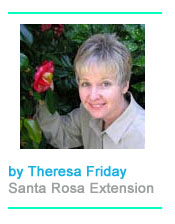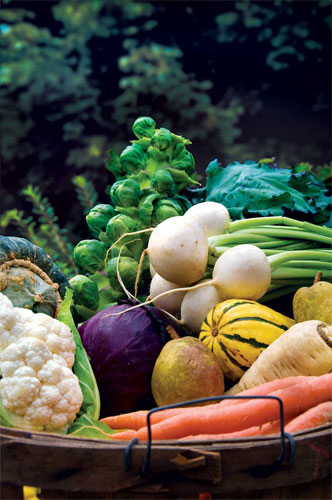Gardening: September’s Need To Know
September 11, 2010
September marks the beginning of the fall gardening season. Usually by the second week of the month the weather begins to cool. It’s time to break out of
the summer doldrums and head into the garden and landscape because there are many projects that are best done this month.
 September is the prime time to plant many of the cool season vegetables. You can sow seeds of beets, broccoli, brussels sprouts, carrots, cauliflower, collards, endive, escarole, kale, kohlrabi, lettuce, mustard, onions, parsley and radishes. If plants of these are available they can also be set out.
September is the prime time to plant many of the cool season vegetables. You can sow seeds of beets, broccoli, brussels sprouts, carrots, cauliflower, collards, endive, escarole, kale, kohlrabi, lettuce, mustard, onions, parsley and radishes. If plants of these are available they can also be set out.
If you plant early in the month, you can still plant some of the warm season vegetables including beans, cucumbers and summer squash.
Fall is also a great time to divide clumping perennials such as daylilies, mondo grass and liriope. Division is the quickest and easiest method of multiplying most herbaceous perennials. Simply dig the plants and shake off the soil. It will be apparent where to separate the plants into smaller units having roots and leaves.
Division simply involves separating the clump into pieces with adequate roots and shoots for reestablishment. A small clump with one to two shoots and adequate roots for transplanting is called a bib. Some plants may be real woody and require an ax or saw to separate them while others may be soft and succulent and can be separated by hand. Divided pieces should be replanted at the same depth as they grew originally.
 September is also a good time to start your preparation for planting trees and shrubs. Planting during fall and early winter allows the plants to establish their root systems during our relatively mild winters. When hot weather arrives next summer, fall planted trees and shrubs are already well established and better able to cope with the heat stress. Choose your trees and shrubs carefully. Learn about the plant before you buy it. Know its mature height and its sun or shade requirements. Even a well-chosen tree or shrub can become a problem if planted in the wrong location.
September is also a good time to start your preparation for planting trees and shrubs. Planting during fall and early winter allows the plants to establish their root systems during our relatively mild winters. When hot weather arrives next summer, fall planted trees and shrubs are already well established and better able to cope with the heat stress. Choose your trees and shrubs carefully. Learn about the plant before you buy it. Know its mature height and its sun or shade requirements. Even a well-chosen tree or shrub can become a problem if planted in the wrong location.
September is also the last month to fertilize our lawns and many of our landscape plants. Do not fertilizer too late, no later than the last week of September. A late season application of high nitrogen fertilizer can cause a flush of new growth too late in the year. It “wakes” the plant up at a time when it should be getting ready to “go to sleep” or enter dormancy. A late season growth flush decreases the plant’s winter hardiness and increases the possibility of cold damage.
Carefully select your fertilizer. For your lawn, consider an application of low nitrogen, high potassium fertilizer such as a 5-0-15, 5-0-20 or a 5-5-30. And don’t be misled by the term “winterizer” fertilizer. Many fertilizers advertised as winterizers are very high in nitrogen and are not good choices for a late season application.
Pine needles fall during September and October. Rake and use them in your flower and shrub beds. Pine needles make excellent mulch.
Apply generously to obtain a depth of two to three inches after they have settled.



Comments